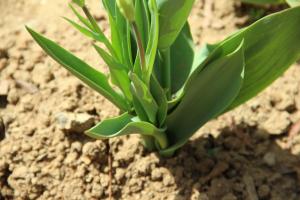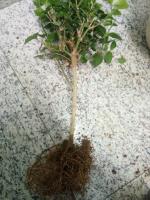Introduction
When it comes to gardening, the question of which plants should be planted together often arises. One common combination that many people consider is planting tomatoes and peppers together. Both plants belong to the nightshade family and have similar nutrient requirements. However, there are a few factors to consider before deciding whether to plant these two crops together.
Competition for Nutrients
Tomatoes and peppers require similar nutrients to grow, such as nitrogen, phosphorus, and potassium. When planted together, they will compete for these essential nutrients in the soil. If the soil is not fertile enough to supply the plants with enough nutrients, they will struggle to grow, resulting in poor yields. Therefore, it is essential to prepare the soil adequately by adding compost and other organic matter to provide the plants with enough nutrients to thrive.
Pest Control
Another factor to consider when planting tomatoes and peppers together is their susceptibility to insects and diseases. Some pests, such as aphids and whiteflies, are attracted to both plants and can quickly spread from one to the other. Also, some diseases, such as bacterial spot, can affect both crops. By planting these two plants together, you are creating an environment that is conducive to pest and disease infestation, making it more challenging to control them. It is advisable to plant tomatoes and peppers at least five feet apart to minimize the risk of cross-contamination, or use companion plants, such as basil, to repel insects and prevent disease.
Growth Habits
Tomatoes and peppers have different growth habits that could affect each other negatively when planted together. Tomatoes, for instance, are tall and sprawling plants that need support, such as stakes or trellises, to grow upright. On the other hand, peppers are bushier and shorter, with narrower stems that might not require support. When planted together, tomato plants can shade and steal nutrients from pepper plants, affecting their growth and yield. Therefore, it is best to consider each plant's growth habit before planting them together and ensure adequate spacing to allow each plant to grow and spread without interfering with the other.
The Benefits of Planting Tomatoes and Peppers Together
While there are some challenges to planting tomatoes and peppers together, there are also some benefits that make this combination worth considering. For instance, these two crops have similar nutrient requirements, meaning they can thrive well together in the same soil. Additionally, planting these two plants together can help maximize garden space, especially if you have limited space. Instead of dedicating separate beds for each crop, you can plant both in one bed or interplant them, making the most of your available space.
Conclusion
In conclusion, planting tomatoes and peppers together can be a great way to maximize space and utilize soil nutrients. However, it is crucial to consider each plant's growth habit and nutrient requirements, as well as the potential risks of pest and disease infestation, before planting them together. With proper preparation and care, you can enjoy a bountiful harvest of both crops in one garden bed.

 how many times do yo...
how many times do yo... how many planted tre...
how many planted tre... how many pine trees ...
how many pine trees ... how many pecan trees...
how many pecan trees... how many plants comp...
how many plants comp... how many plants can ...
how many plants can ... how many plants and ...
how many plants and ... how many pepper plan...
how many pepper plan...































